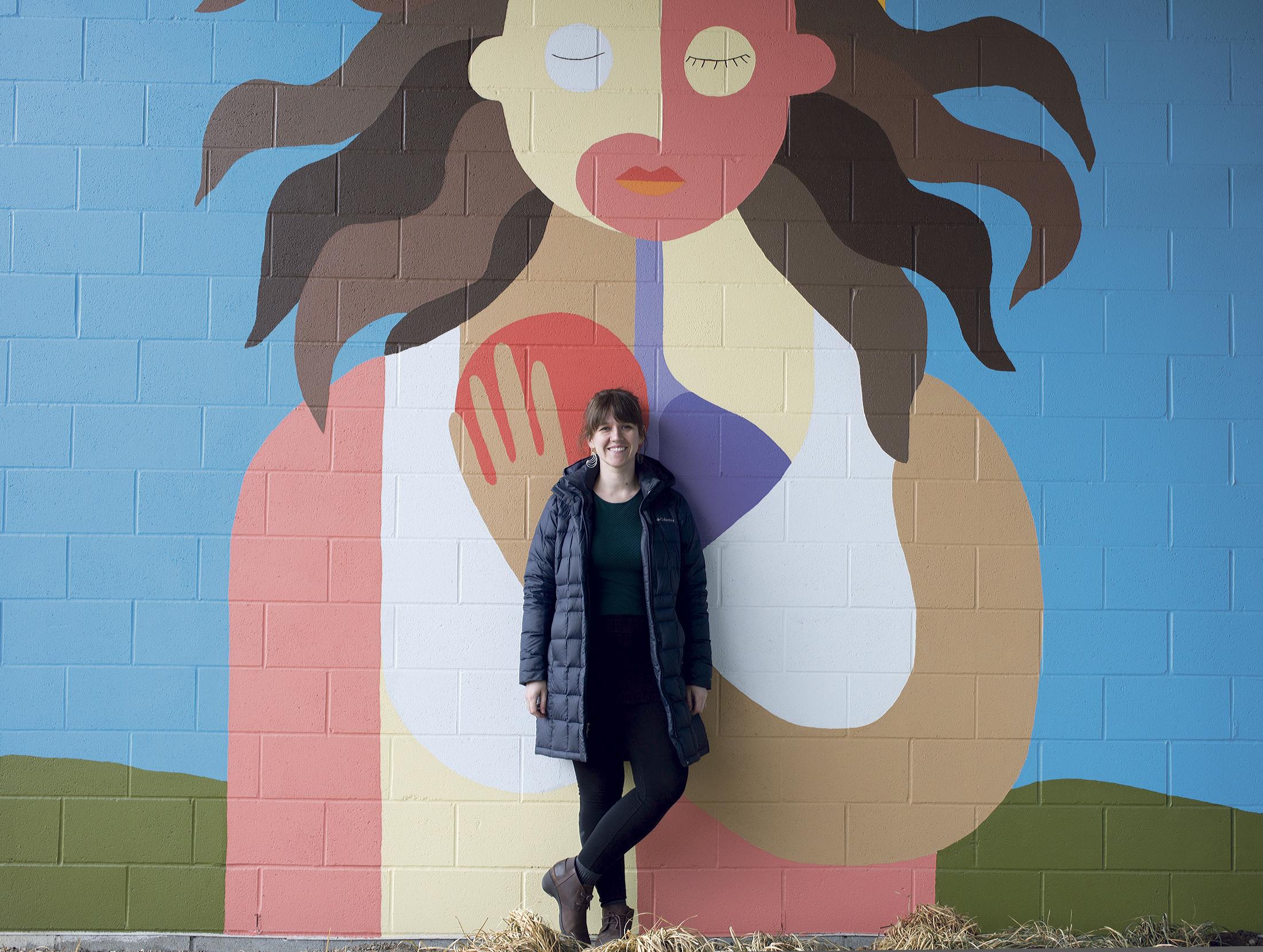614 Magazine
Columbus Alive

View Original Article in Columbus Alive’s March 13th Publication
Artist hopes making murals offers as much peace and hope for others as they do for her
by Jim Fischer, photo by Tim Johnson
“Lauren Carter Best is kind of an accidental muralist.
Maybe not so much accidental as coincidental, but you get the picture (pun intended).
Seated in sukhasana pose on a sofa in the Spartan setting of the current lobby/office area of the yet-to-open Gravity apartments on West Broad Street in Franklinton, Best discussed her ongoing effort to understand, cope with and find hope in her struggle with mental illness, including (but not limited to): making art; traditional medical and psychiatric treatment; holistic approaches, including yoga; Buddhist principles; meditation; and Reiki. (‘Everything New Age that you can do,’ she said.) In particular, she sees her journeys with art and mental illness as “companions.”
‘I have notebooks filled with manic writing and drawings from times I thought I was figuring out the world. I have a lot of drawings of my sadness and my confusion, trying to create a visual for what it is I’m feeling because words don’t always do it for me. I needed something a little bit more visual,’ Best said. ‘A lot of my art is me working through things. More recently, I feel like I have been able to make art that is helpful for me, so I can look at it and feel good. When I hear from other people who felt good when they look at my art, too, I thought maybe I should keep going and make bigger pieces and murals.’
Feeling like your work can be helpful, and thinking that making bigger work in public spaces might heighten that impact, doesn’t automatically provide the opportunity to paint on the outside of buildings. But Best’s piece on a wall at Gravity that faces Broad Street, as well as her work at several Columbus City Schools courtesy an opportunity provided by Community Refugee & Immigration Services, have helped bring Best’s muraling aspirations to life.
‘I believe that we all suffer to some extent. That we’re all searching for relief. I want my artwork to help people find that relief, even if they’re just walking down Broad Street and they’re looking at [the mural] and they think, ‘Yeah,’ and just pause for a second,’ Best said. ‘When I’m painting is one of the few times when my mind is calm, especially the big works. I like painting in block colors because, for me, it’s just so calming and soothing, to know that this is my task, that there’s nothing else to think about or figure out.’
Relief has often proven elusive for Best. Chronic deep sadness as a child was diagnosed as depression when Best was 12. Those struggles led the Worthington native to pursue a degree in psychology at Ohio State, after which she moved west, following muses until her mental health again began to deteriorate. She could no longer work as a counselor, unable to keep from taking others’ struggles on as her own.
She returned to Columbus and again sought treatment, along the way earning a master’s degree in social work. Best hoped that working to ease suffering on a communal rather than an individual level would be a healthier way to employ her natural bent toward empathy. This, too, proved a challenge. Eventually, Best was diagnosed as having bipolar disorder.
‘Lots of people struggle ... in a society that tells us we shouldn’t need what we do, or we should be a certain way, or we should be working this hard, or we should... so many shoulds,’ Best said. ‘I’ve been hopeless for a lot of my life. There was a good period of time where I could just not envision having to live with the way my mind worked for the rest of my life, and I didn’t want to. But I just kept going, and my parents were so supportive and I had so many loving friends. Once I found the right medicine, the right treatment, I started to think that maybe I really can do this.’
Her first visit to a hospital psychiatric unit is something Best has been thinking a lot about in recent months. ‘I remember asking a nurse, ‘I want to be a mother some day. Am I going to be able to do that?’ She could have said anything but she didn’t hesitate to offer encouragement, that they would be there whenever I needed to take care of me. She just gave me so much hope,’ said Best, who is, with her husband, expecting a child this summer.
Best said her husband, a social worker at Nationwide Children’s Hospital, and her parents, have always provided her support and kept her hopeful. That she has been given the opportunity to make murals at this time only feeds that hopefulness. And, a dream of Best’s is to work with patients who have mental illness to create ‘less sterile’ walls inside of mental health facilities. Again, her own mental health and her art are companions on a journey.
‘I feel like my hope has always been there, but my family and some great friends have given so much to me,’ Best said. ‘And I feel even more confidence now — confidence that I can live beyond just surviving. That I can raise a child and have a family and recognize my own value. A lot of that comes from the art.’”

